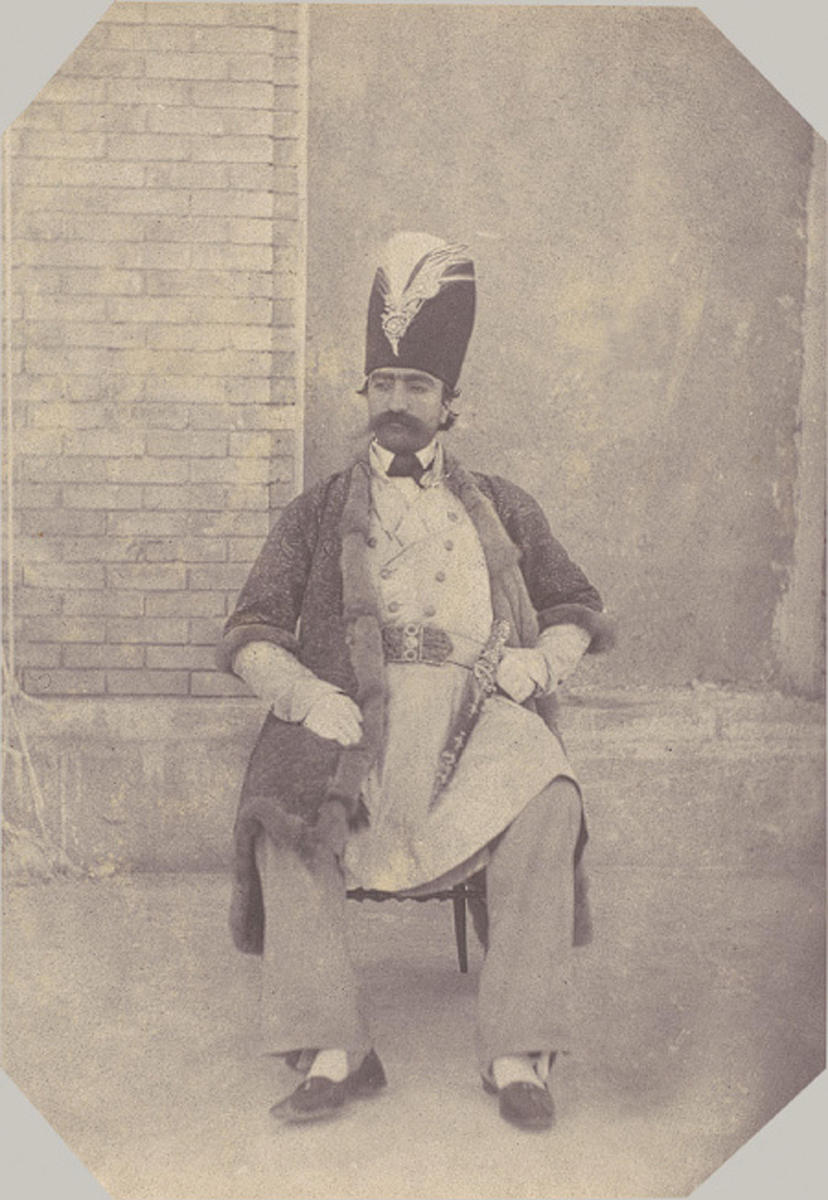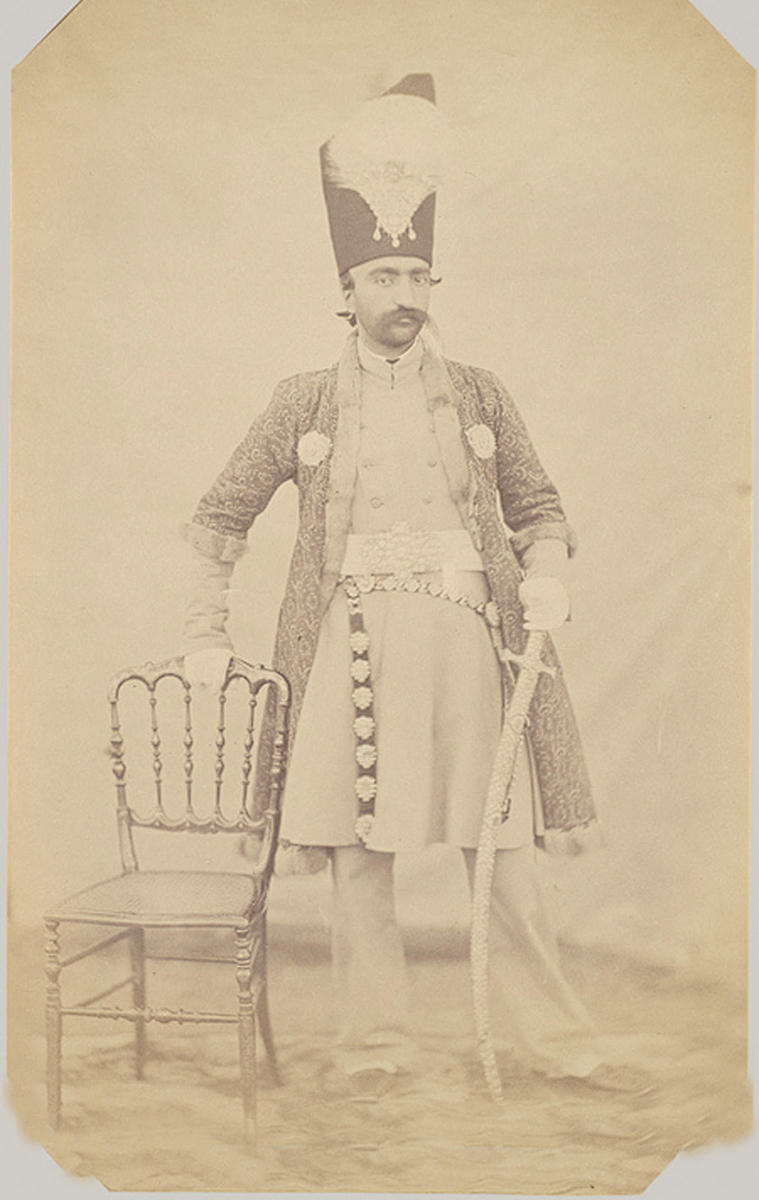
“In the spring of the year 18-, the Shah-in-Shah, the great exalted and holy monarch, the absolute ruler and overlord of all the lands of Persia, began to feel a sense of malaise of a kind he had never experienced before.” Thus begins The Tale of the 1002nd Night (published in 1939) by the Austrian novelist Joseph Roth (1894-1939), a re-imagining of the famous European tour of Nasir al-Din Shah Qajar in the spring of 1873. In the novel, the Shah of Persia seeks a cure to his malaise in the beauty of Vienna and Viennese beauties, and in Roth’s novel the monarch’s visit becomes an excuse to extol the grandness of Vienna and the Hapsburg Empire, then on the brink of destruction.
The historical version of Nasir al-Din Shah’s first visit to Europe (he subsequently took additional European tours in 1878 and 1889) was both less exotic (and erotic) and as strange as its fictional counterpart. Historians have speculated that the 1873 journey to Europe occurred at the behest of the Shah’s grand vizier, who in his zeal for reform believed it necessary for the Shah to see Europe with his own eyes. Nasir al-Din Shah seemed rather hesitant about this trip, despite being a great traveler (and travel writer). He writes in the first entry of his travel diary: “It has now been a year of planning for the journey to farangistan. So it’s obvious what we’ve seen and endured in terms of the chatter of the public and the andarun, inside the harem, the women’s quarters and the men’s, both inside and outside up to now when we must put on our boots and set off.” Despite his early reluctance, as the trip unfolds from the Caspian sea to Russia and through Prussia, Belgium, England, France, Switzerland, Vienna, Italy and finally back to Iran, Nasir al-Din Shah’s curiosity, humor, and perception kicks into full gear. His travelogue presents the image of a man well informed about many of his destinations and curious about the people he encounters and the various sights and spectacles that Europe had to offer at that time.
Roth used the Shah’s visit to Vienna in the nineteenth century as an excuse to eulogize a city lost to Hitler in 1938. But what stands out in the Shah’s own account of his journey is not so much Vienna but Paris, which in 1873 stood in ruins after the Franco-Prussian war of 1870-1871 and the Paris Commune of 1871.
Baedeker’s 1872 handbook for travelers, Paris and Northern France, warns travelers to Paris that “since the restoration of peace the city has in many respects resumed its former aspect, but in others it has sustained such irreparable losses that it must necessarily again pass through a protracted period of transition.” Nasir al-Din Shah’s travelogue records many of the capital’s iconic sights, creating a bizarre tableau of a ruined city as seen through the eyes of a first-time tourist.
Nasir al-Din Shah arrived in Paris on July 7, 1873 by train, and was taken immediately to the Arc de Triomphe for an official reception. The Arc, as described by the Shah, was “a very excellent building, but in this most recent war with the Prussians had received many bullets and parts of it are destroyed. They had covered over those sections so as to hide them from view and placed rugs and chairs between its pillars.” After he is taken on a walking tour of the city, he writes: “Today I saw the French in a strange mood. First of all, they still have that feeling of mourning after the war with Germany, and in general, from old to young, they are sad and melancholic.” It’s not just the postwar destruction that riles the king: “In the alleys and streets, every twenty steps they have built a column, not very tall, which has a hole inside. It’s for people’s urination. People stand up in front of each other, without any shame, [dick] in hand, peeing. The stink of urine is in all the alleyways.” By the time he visits the Tuileries (in ruins) and the Vendome Column (also in ruins), Nasir al-Din Shah is frustrated: “In sum, the city of Paris is without splendor, without chiefs, without nobles, and without a king; it’s obvious what a place without a king looks like.”
Despite the visible scars on the city, Nasir al-Din Shah enjoyed himself in Paris, famously labeled by Walter Benjamin as the “capital of the nineteenth century.” He visited the theater, the circus, schools, the parliament, and the mint house. His itinerary was similar to the one suggested by Baedeker’s guide for (European) travelers: The Louvre, Bois de Boulogne, the Luxembourg gardens, Palais Royal, Trocadero, and Napoleon’s grave in Les Invalides. He even met with the Baron de Rothschild, in response to whose request for the humane treatment of Iran’s Jewish population he famously suggested that the Jews should “buy a country, gather all the Jews of the world there, and be in charge of themselves so as to get some peace of mind and not be scattered around the globe like this.”

Nonetheless, there was a certain absurdity to the trip itself. The first visit of any Persian monarch to the mythical city of Paris occurred at a time when the city’s own image of itself — like many of its monuments — staggered between destruction and reconstruction, monarchy and republic, revolution and conservatism. These oscillations informed Nasir al-Din Shah’s observations; he calls the panorama, a painted cylindrical surface that was viewed from the inside, a “very strange industry” and notes how its subjects were not only historical French victories but “France’s defeat and its misery in the hands of the Prussians.” The fact that Paris seemed almost to revel in its war wounds seemed quite strange to the Persian monarch.
More than a hundred years later, during the Iran-Iraq war of 1980-1988, Iranian humorists captured the absurdity of touring a war-torn city in a completely different context. Hossein-Ali Montazeri, current reformist darling and ex-nave of Iranian popular culture, was taken on a tour of parts of Tehran that had been hit by Iraqi missiles. As the entourage went from one destroyed house to another, Montazeri would raise his head and say al-hamdu l'illah, thanking his lord for what he had seen. Confused, an advisor asked him tepidly why it was that every time he saw a destroyed house, he would give thanks to god. Montazeri responded, “I’m thanking god for guiding the missiles to places already lying in ruins.”
Nasir al-Din Shah and Muntazeri seemed to share a scorn for popular Iranian culture and an image of an incompetent and at times naive leader, an image that in neither case does justice to the actual person. But I’d like to think that had Nasir al-Din Shah heard this joke, he too would have chuckled and remembered his own first visit to Paris, a city that was not able to hide its war wounds from the inquisitive traveler. It’s little wonder that the next time he traveled to Europe, in 1878, he bypassed most other cities and headed straight to Paris.